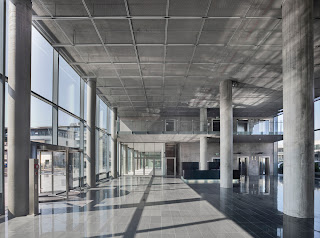Point

Point is the foundation , and the smallest part of a drawing. It owns its basics in width and length, and the smallest area . Through the change on the area and direction, it creates different elements such as line, and plane. It can focus and gather the elements, in a drawing, it also guide and give the hint to the reader. Also, Point is comparable and relative in the picture, it looks big when it is placed in a small frame and vice versa, it can be circle, rectangle of any other shape.
When many things point to the same direction, they focus on one point. In conception, point can spread to different directions. It has a function of start,spread, and end.
Line
When we see line, it is created by many points which is arranged very closed from the same direction. Line has length, but only has a thin width which has its area. It has different expressions such as long, short, curve, straight. It can indicate the direction and location, and create the fringe of a plane,and to range the plane. Also, it is the trail of the points.
Line is a concept that does not really exist in nature. Since it has so many changes in its outlook, it shows different strength, speed, continues, movement, elasticity etc, to changes the reader's feeling.
Plane
Plane is created by the lines with closed and the same direction. They can also connected by the curve line or straight line. For the 2 dimension, it has location, shape, and direction. And the importance of plane is the area, it has more representation and emotion than the point and line.
For the geometric plane, it is created by straight and curved line. They are simple and clean, when we draw then too much, it will become messy and lose the characteristic of plane.
For the non-geometric plane, for instance, the shape of the leaf ,flower etc. It has more emotion and expression then geometric plane.
Volume
When
different planes face to different direction, and connect their edges,
that will create volume. It has length , width and height. It is
dimension and placement. Everything we can see in daily life such as air
,has its own form with spheroid, and pyramidical etc.
We
see volume everyday. Especially in architecture, we can see the volume
which create different forms for the spaces and capacity for us.
Source:











I love this blog!!! Its so easy to navigate through and the information portrayed is very knowledgeable. GREAT JOB!!!!
ReplyDeleteNice work! I love your blog. Just one comment for your chapter 1 study is that you do not necessarily draw all the lines that you defined from the picture to your diagram. An example, for the line study, you can just put a few important lines for your diagram study. Good job.
ReplyDeleteHello. Love the blog. It's no surprise that you chose the background you did--It is so you! NIce work on Chapter one. Great explanation and spot on pics. Looking good. I look forward to future post.
ReplyDeleteWell you made that explanation seem easy. My 3d design prof. Took an hour and I still couldn't understand.
ReplyDelete